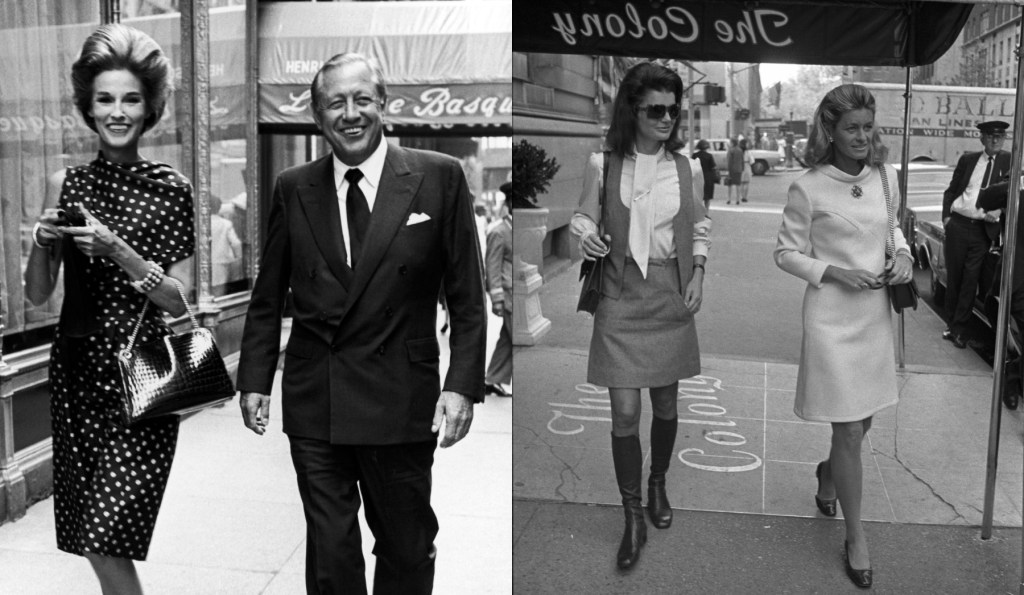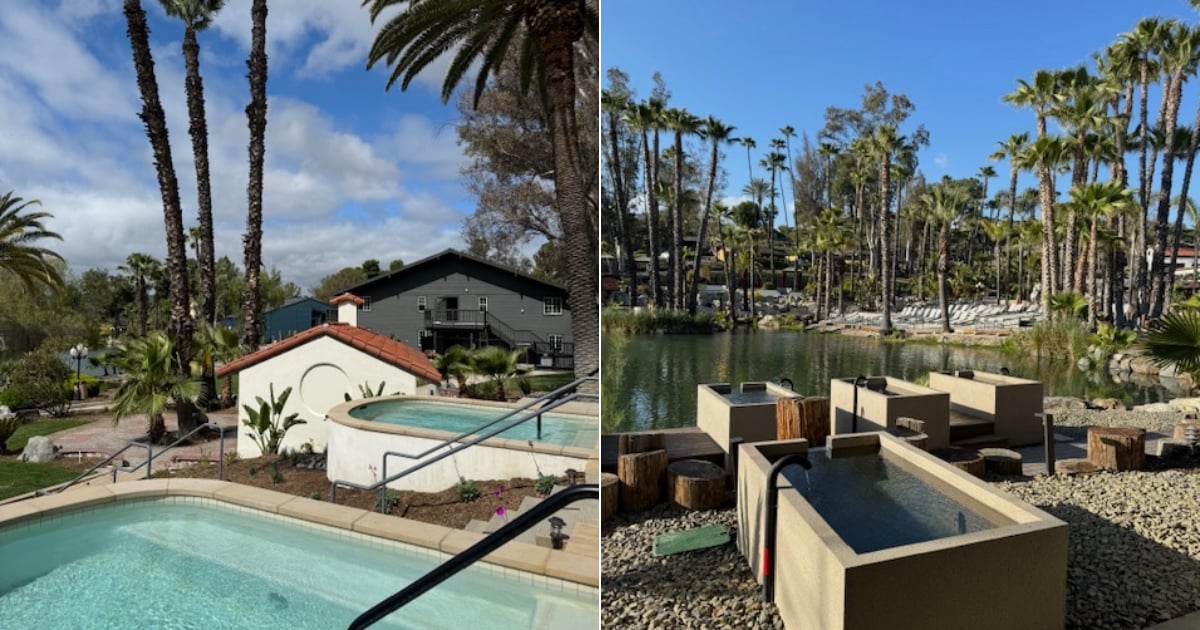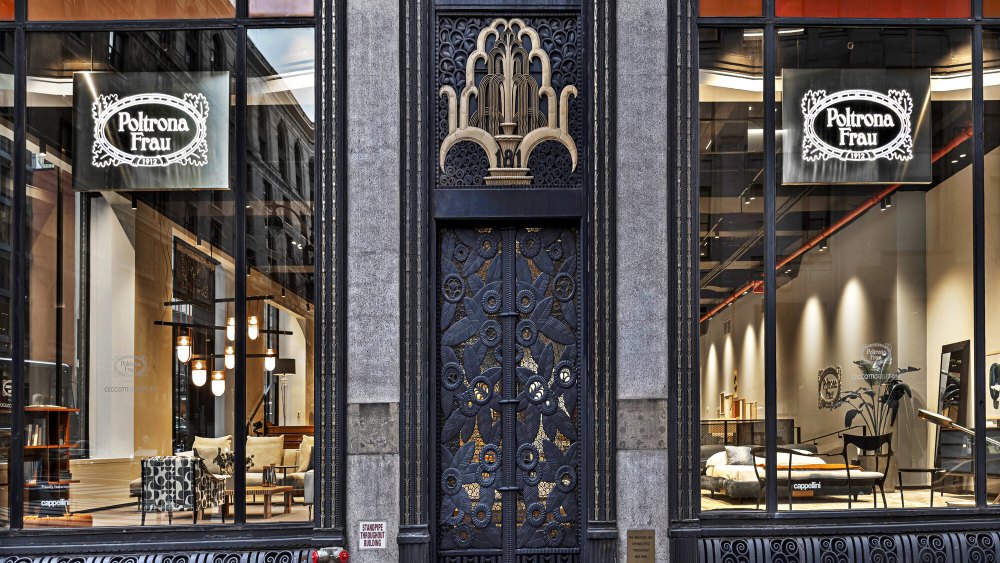For women like Babe Paley, Jackie Kennedy and Lee Radziwill, lunching was more than just a hobby — it was a lifestyle. Between dining on French fare at La Côte Basque and enjoying “sophisticated WASP” cuisine at the Colony, high society’s swans utilized their midday meal to exchange gossip and don their latest designer duds.
WWD’s former editor, John Fairchild, is credited with coining the phrase “ladies who lunch,” a sobriquet for the fashionable patrons who flocked to storied institutions like La Grenouille, Quo Vadis and Le Pavillon. Today, few of these haute cuisine haunts stand, but their legend remains ingrained in novels, films and television shows, with “Feud: Capote vs. The Swans” being a recent highlight.
Ahead, four famed eateries frequented by the ladies who lunch.
La Côte Basque

Opened in 1959 by French restauranteur Henri Soulé (who also founded hot spots including Le Pavillon and The Hedges), La Côte Basque was located at 60 West 55th Street. Jean-Jacques Rachou became the owner of the restaurant in 1979, remaining there until its closure in 2004.
Jackie Kennedy, Frank Sinatra and the Duchess of Windsor, as well as Capote and his favorite swan, Paley, were among La Côte Basque’s most notable patrons. Specializing in French fare, the menu offered a selection of luxe dishes like foie gras and steak au poivre.
As of 2003, a fixed-price dinner at La Côte Basque cost $70 per person, while an average à la carte meal was about $100, according to the New York Times. In the same article, Rachou estimated the weekly cost of flowers at more than $2,200, while more than $3,000 was spent on linens.
La Côte Basque was decorated with seaside murals painted by Bernard Lamotte, whose studio was located just above La Grenouille, another eatery frequented by the high society crowd.
Aside from being namechecked in Capote’s infamous excerpt of “Answered Prayers,” La Côte Basque is mentioned in an episode of “Sex and the City” where Charlotte York’s mother-in-law, Bunny, suggests the restaurant for dinner. La Côte Basque is also a notable setting in “Feud: Capote vs. the Swans.”
The Colony Restaurant

Located at 30 East 61st Street, the Colony was founded by Joseph L. Pani in 1919 before it was purchased by a group of employees in 1922. While the restaurant struggled initially, their $25,000 investment would eventually pay off, as the Colony transformed into an elite haunt for movie stars, politicians and socialites alike.
Throughout the 1920s, the Colony’s reputation was checkered by its shady clientele. Gangsters including Arnold Rothstein would meet their mistresses in its upstairs gambling club, sneaking liquor from the service elevator, where sat the Colony’s Prohibition-era stash. Later that decade, the Colony became the first New York restaurant to install air conditioning; It was also the first Stateside establishment to serve Dom Pérignon.

Socialite Virginia Fair Vanderbilt is credited with introducing the Colony to high society. After happening upon the restaurant for lunch, she recommended it to a group of friends, forever altering its once sordid reputation.
Swans including C.Z. Guest, Gloria Guinness and Slim Keith all frequented the Colony, where they enjoyed what fashion editor Babs Simpson once coined “sophisticated Wasp” cuisine: chicken hash, soft shell crab and chilled soups were popular menu items.
The Colony was also known for its top-of-the line-service: the restaurant sent personalized meals to patrons’ homes, and even their pets were waited on hand and foot. Dogs had their own private chamber in the restaurant, where they lounged on plush satin pillows and ate from silver serving trays. “You’d see Yorkshires, poodles, dachshunds, boxers, pugs,” designer Bill Blass told Vanity Fair in 2000. “It was amazing how they got along — in some respect better than the ladies themselves.”

Fairchild frequently sent photographers to wait outside the Colony, snapping photos of Radziwill, Capote and Paley, among other regulars.
After 50 years in business, the Colony closed in 1971.
La Grenouille

La Grenouille is the last remaining of “Les Six,” what Fairchild’s then newly launched publication, W magazine, declared “the last bastions of grand luxe dining in New York” — La Côte Basque also made the list.
Opened in 1962, La Grenouille was the brainchild of Gisèle Masson, wife of the restaurant’s owner, Charles Masson Sr. Gisèle discovered its location (3 East 52nd Street, where it still stands today), signed the lease and informed her husband, via telegram, of their new business venture. Charles named the eatery after a pet name for his wife: “ma petite grenouille.”

While La Grenouille’s first service took place on a chilly, snowy night, patrons still flocked to sample its menu of French haute cuisine. Several items served at its opening, including frogs’ legs “Provençale” and Capote’s favorite dish, sole grillée, remain on the menu.
The writer and his swans, Paley, Guinness and Radziwill, were known to frequent La Grenouille. Notable mutuals like Kennedy, Andy Warhol and the Duchess of Windsor also dined there.
Legend has it that Paley originated the trend of accessorizing handbags with scarves just outside the restaurant. While on her way to La Grenouille, Paley was photographed as she removed her silk scarf and tied it around the strap of her handbag, inspiring fashionphiles for decades to come.

La Grenouille is briefly mentioned in Capote’s “La Côte Basque, 1965” as a “New York restaurant of established chic,” among others like the Colony, Lafayette and La Caravelle.
21 Club

The 21 Club officially opened in 1930, just a few years before the end of Prohibition. After running their first speakeasies throughout the 1920s, cousins Charlie Berns and Jack Kreindler moved shop to 21 East 52 Street. Despite frequent police raids, Berns and Kreindler continued serving booze, storing their contraband down hidden chutes, inside camouflaged chambers and behind 5,000-pound doors.
Mob bosses, flappers and Ernest Hemingway were patrons of 21 in its early days — on one occasion, the novelist was caught canoodling with gangster Legs Diamond’s girlfriend in the kitchen.
21 eventually evolved from a dive to a high society hot spot, with socialites including Guest, Keith and Kennedy stopping by to feast on chicken hash and the 21 Burger. Capote was a known regular at the restaurant, using it as a setting in his 1958 novel “Breakfast at Tiffany’s.” He was hardly the only novelist to namecheck the famed club — 21 is a recurring haunt in Jacqueline Susann’s saucy 1966 bestseller, “Valley of the Dolls.”

The restaurant is also the stuff of Hollywood legend: Humphrey Bogart proposed to Lauren Bacall in 21’s main room, which later served as a press party venue for “The Seven-Year Itch.” In Alfred Hitchcock’s “Rear Window,” Grace Kelly consoles Jimmy Stewart with a hand-delivered meal from 21.
The club’s main dining room featured wood-paneled walls and ceilings hung with various memorabilia including toy cars, baseball helmets and soccer balls. 21’s most recognizable feature was its line of cast iron lawn jockeys that decorated the front stairs, all of which were donated by established equestrians.
After 90 years in business, 21 shut its doors in 2020.



